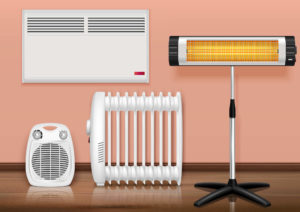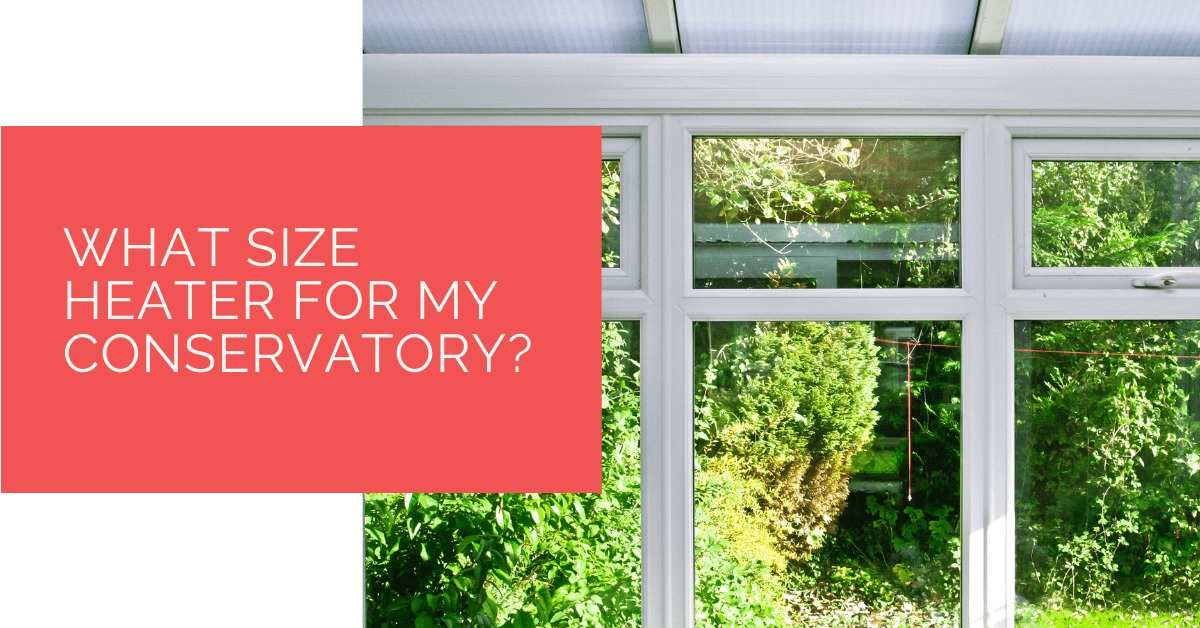Conservatory heating has been a topic of conversation for a long time. Incorporating a conservatory into your home is a great way to add more space and value. However, it’s imperative to heat this space during the winter.
It is surprising how much heat is required to warm your conservatory space. There are multiple heater options to fulfil this need.
The heat required for your conservatory will depend on several factors, such as the size, shape and other elements. You can calculate the heat needed using the BTU calculator to help decide the required heater size.
Read on to learn the answers to your questions, like how to calculate the BTU and what factors affect the choice of the right heater.
Contents
Key Takeaways
- Heating a conservatory efficiently depends on calculating the appropriate BTU (British Thermal Unit) required, considering factors like space dimensions, windows, doors, and roof pitch.
- Calculate the total BTU needed for your conservatory and divide it by the number of heaters planned for installation to determine the average BTU needed per heater.
- Factors such as aesthetics, other heat sources, and sunlight exposure also influence the choice of the right heater for your conservatory.
What is BTU?
BTU, also known as the British thermal unit, refers to a traditional heat term. It is equivalent to the amount of energy released by a burning match.
The process of calculating the BTU Might seem a little daunting and complicated to some. Ordinarily, people prefer to calculate the heat output using the traditional watt scale. To convert from watt to BTU, remember that one watt of energy equals 3.41 BTUs.
On the contrary, if you have the exact BTU measurement, you can calculate the needed heat output by your device in watts. You need to divide the BTU by 3.41.

How to Calculate the BTU of Your Space?
Multiple factors come into play while choosing a radiator for your conservatory. The dimensions of the space impact the heater size significantly. In addition to this, windows, doors and steep roofs also play a huge role.
The most common conservatory designs require ideally between 30 and 50 BTU per square feet of floor space. An additional amount is necessary for the presence of steeper roofs.
If your conservatory has a minimum of 10 windows or doors which open outwards, then by the standard, you will need close to 100 BTU per square foot of floor area concerning standard heaters. Conservatories with less than 9 windows require approximately 30 BTU per square foot.
Your BTU calculation solely depends on the floor area. Make sure to account for all the square footage when calculating the value. This helps gauge an accurate idea of how much heat is needed.
In the presence of steep roofs, you’ll need more energy to heat the space during winters when compared to a conservatory with a typical flat roof. You have to add 50 BTU per foot for every 20-degree pitch off the top as per general recommendation.
How to Choose the Right Heater?
Use the room dimensions and account for the additional heat loss due to windows and doors to arrive at a final BTU value. This denotes the total heat requirement for the conservatory.
It is vital to note that this value does not represent the BTU requirement of a specific heater. Instead, it is the total required from all the heaters placed within the room.
Once the BTU is calculated, you can determine the heater’s required size and heat output. In most situations, one to two heaters are sufficient to provide the needed warmth in the conservatory. However, larger spaces with more windows and doors might require more heaters.
Consider the total BTU required and divide it by the number of heaters you plan to have installed in the space. This will help you arrive at the average BTU needed by a single heater.

Other Factors Influencing the Selection Process
In addition to the BTU requirement, other factors play a crucial role in choosing the right heater for your conservatory. Let’s have a look at them.
Aesthetics
Different spaces have not only additional requirements but also varying aesthetics. A range of heaters provide a specific look and feel when used in areas. You can choose between horizontal and vertical heaters depending on the layout of the conservatory.
There is a wide range of designs and patterns for heaters today. Make sure to choose a model which seamlessly integrates with your conservatory to give it an elegant looking finish.
Presence of Other Heat Appliances or Electronics
It is important to note any additional devices in the conservatory space that create heat will add a considerable amount of heat to your area and reduce the dependence on the heaters.
Exposure to The Sun
As discussed above, windows and doors play a crucial role in calculating the BTU. If many doors and windows are present in the conservatory, it allows for a considerable amount of sunlight to enter the space. This helps add more heat to the area.
Weather also comes into account, like if you live in a primarily cold region throughout the year, doors and windows do not make a huge difference.
Heat Pump Source: Reliable Heating and Cooling Solutions
At Heat Pump Source, we take pride in our unwavering commitment to serving the UK with top-tier HVAC solutions. From the efficiency of heat pumps and the cool relief of air conditioning to the warmth of boilers, radiators, and underfloor heating, our dedicated team is always at the forefront of innovation. We understand the unique needs of every household and business, and we strive to provide dependable health and cooling products and services that are tailored just for you. Ensuring your comfort and satisfaction is our utmost priority. Whether you have questions, need guidance, or require support, we’re always here to assist. Please don’t hesitate to contact us; we’re eager to be of service.
Conclusion
Choosing the right heater for your conservatory is a reasonably straightforward process. You have to calculate the BTU accurately and split the required load among the number of heaters you decide to have in your space.
Most brands that manufacture and sell heaters provide you with simple tools that help you calculate the BTU. You can also opt for a heater that ranges from 15,000 to 30,000 watts. This will allow you to adjust the heating output based on your requirement.
About the Author
At Heat Pump Source, our articles are the product of a collaborative effort among a team of highly skilled HVAC experts. Our dedicated professionals, hailing from diverse backgrounds in heating, ventilation, air conditioning, and refrigeration, contribute their extensive knowledge and experience to every piece of content. This multidisciplinary approach ensures comprehensive coverage. Our commitment is to deliver authoritative, reliable, and tailored advice to meet the unique needs of every household and business across the UK.

